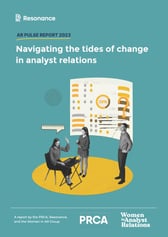
As the titan of industry intelligence, Gartner's scope is vast and varied. With a global network of over 2,000 analysts and experts, Gartner assists more than 300,000 clients across all major enterprise functions in overcoming business challenges daily. This extensive range creates an intricate ecosystem of teams, research communities, and key initiatives.
So, how do analyst relations professionals navigate this complex structure? Which Gartner analysts should you collaborate with? Who should you learn from to gain insights into market perceptions of your company? Who evaluates your products or services? And how should your approach vary with different groups? Whether you're a Gartner novice or a long-time collaborator, understanding the fundamental types of Gartner analysts is crucial to your analyst relations strategy.
Let's delve into the Four Pillars of Gartner Analyst Groups:
- Gartner for IT Leaders (ITL)
- Gartner for Marketers (GM)
- Gartner for Technology & Service Providers (TSP)
- Gartner for Technology Professionals (GTP)
Each group caters to a distinct audience, communicates with specific roles, wields differing levels of influence over buyers and end-user professionals, produces unique research types, and has its own engagement guidelines.
Gartner for IT Leaders (ITL)
ITL analysts liaise primarily with end-users, usually assisting with product or service purchases. They are tuned into buyer trends and adept at identifying standout vendor features, functionalities, and strategies.
Gartner for Marketers (GM)
The GM team interacts mainly with end-users in the marketing realm. They keep abreast of the latest marketing and customer experience strategies and understand how innovative companies leverage technology to bolster their brand strategies. These analysts guide vendors in comprehending the market's requirements in areas like MarTech, AdTech, Customer Experience, Branding, Marketing Data and Analytics, and more. Although a relatively recent addition to Gartner, this section has grown exponentially, particularly after the 2017 acquisitions of L2 and CEB.
Gartner for Technology & Service Providers (TSP)
TSP analysts work predominantly with vendors on product strategy, go-to-market initiatives, and overall business efficiency. Given their role-specific expertise, they can provide precise advice on navigating challenging markets. However, TSP analysts seldom interact with end-users, thus lacking the direct buyer influence that other groups possess. Despite this, due to their understanding of successful vendor strategies, these analysts often contribute to Magic Quadrant evaluations.
Gartner for Technology Professionals (GTP)
GTP analysts, many of whom joined Gartner through the 2009 acquisition of the Burton Group, are field experts capable of advising on detailed strategies, even down to specific lines of code. End-users consult GTP for resolving complex tech issues. Vendors engage with GTP to understand how their tools are employed daily and to learn how future versions can accommodate diverse use cases. While GTP authors don't write traditional 2×2 evaluative research, they can sway buyers by penetrating marketing jargon and scrutinizing solution details to determine suitability for specific use cases.
Gartner for Sales Leaders (GSL)
These analysts help sales leaders and their teams with up-to-date tools, frameworks and guidance to help them... well.... sell. They can help with growth strategies, how to meet revenue goals and sales ops.
These clusters are not exhaustive. Gartner also hosts analysts catering specifically to CIOs, as well as leaders in supply chain, finance and accounting, HR, legal, specific industry verticals, and more.
While these groupings can give you a general sense of an analyst's typical encounters in his or her role, bear in mind that each analyst is unique, with fluid expectations around written research and advisory. Not all Magic Quadrant authors are ITL and Marketing analysts, and GTP analysts aren't the only ones capable of deep-diving into tech specs. In fact, many research notes involve layers of analyst collaboration and review across teams, and some analysts not represented on a report's author line can significantly influence the research. The selection of branded research is likely to evolve as these teams continue to develop.



 "The intricacies of the data-driven landscape is written into the DNA of Resonance. We are built for the data economy."
"The intricacies of the data-driven landscape is written into the DNA of Resonance. We are built for the data economy.".jpeg?width=250&height=181&name=AdobeStock_565367297%20(1).jpeg)
 "In Tech PR we have a front row seat to the changing technology landscape. From Generative AI to Quantum, it's our job to insert our clients' voices into the narrative"
"In Tech PR we have a front row seat to the changing technology landscape. From Generative AI to Quantum, it's our job to insert our clients' voices into the narrative"



 "In a world where the only constant is change, how do tech brands stay one step ahead of the market? That's where Resonance comes in"
"In a world where the only constant is change, how do tech brands stay one step ahead of the market? That's where Resonance comes in".png?width=219&height=219&name=Seb%20Moss%20wavelength%20thumbnail%20(1).png)

 "Resonance is a group of technology, business and communications experts"
"Resonance is a group of technology, business and communications experts"

